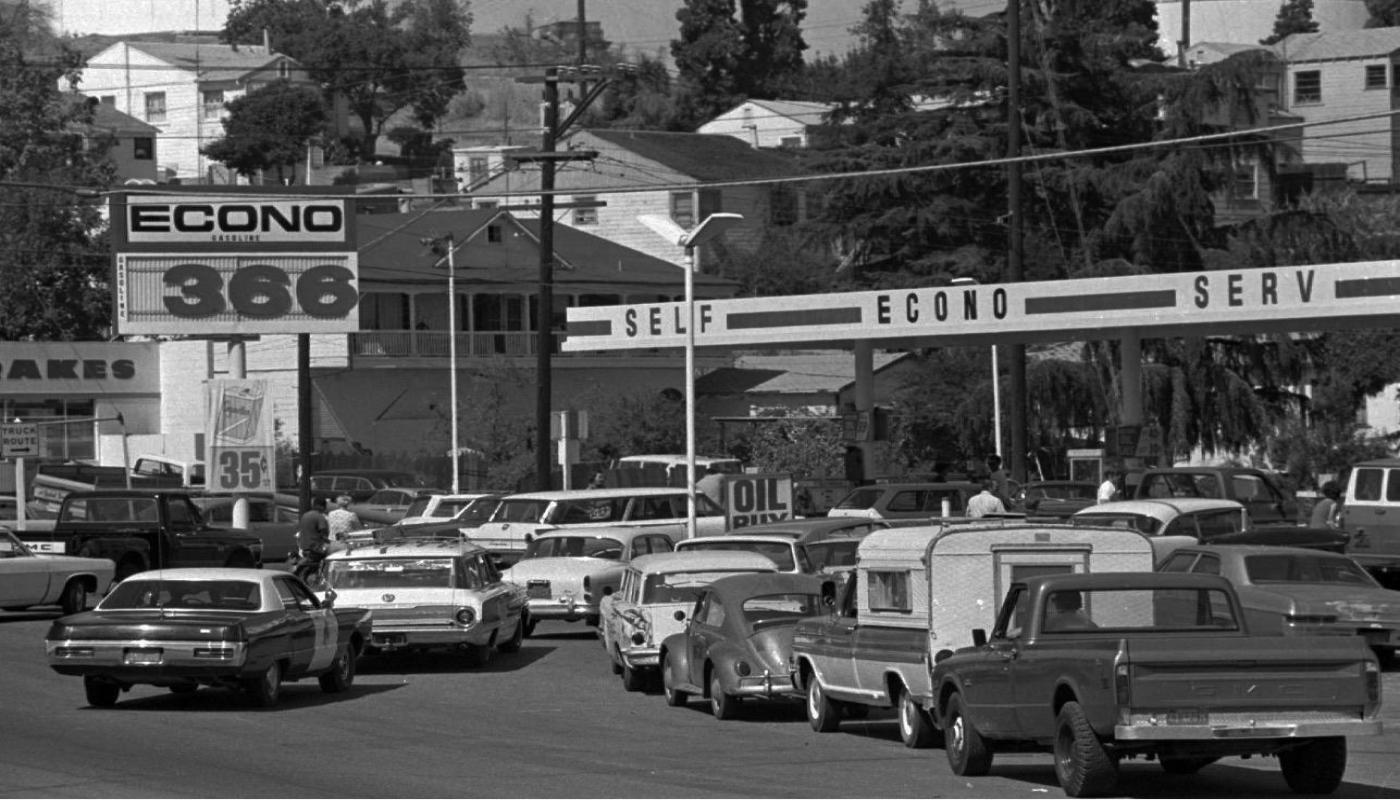The idea that times past were simpler isn’t new. Modern life buzzes with confusion. The pace at which things change feels exponentially faster, and the degree of uncertainty the future holds seems to be amplified in the digital age. On top of that, the ordeal of the last two years has stripped away many of our illusions of how much control we have over what comes next.
We’ve all been through a lot recently, so it’s understandable if planning for the future feels a bit futile at present. It is easy to fall into the trap of “waiting for things to clear up” before putting together a plan. In an era of quarantines and travel restrictions this may make sense for a vacation, but when it comes to financial planning your most valuable resource is time. If history is any guide, by the time the current predicament subsides, the next will come along. Proper financial planning can help you navigate the uncertain road ahead.
All is Flux
We may be fooling ourselves if we think times are more uncertain now than ever. “All is flux, nothing stays still” feels like a modern sentiment, but it was set down on a scrap of papyrus by Heraclitus, in Greece sometime around 500 BC. The fact that we can relate to a 2,500-year-old complaint is a good clue that uncertainty in life is a feature rather than a bug.
Lack of clarity about the future can take different forms. For many during the Roaring Twenties, it seemed as if the party would never stop. With the benefit of hindsight, we know the party did stop, quite painfully, dashing the best laid plans of mice and men.
Conversely, starting in the mid-60s America struggled through a prolonged period of internal and external conflict, tragedy, and economic hardship that felt like the country was coming apart at the seams. Here again, we now know that things did change and the following two decades were in many ways the opposite – more peaceful times at home, shorter conflict abroad, and unprecedented economic and technological growth.
The Seduction of Pessimism
The human brain spends a majority of its energy looking into the future, consciously and unconsciously. According to psychologist Marty Seligman, “we thrive by considering our prospects. The power of prospection makes us wise.”
The trap hidden in all this forward thinking, however, is that we’re not very good at predicting the future. Thousands of years ago, when humans first settled down and began farming, a bias for caution helped us survive.
Fast forward to today and our brains are still imprinted with a bias towards caution, which can manifest itself in some less helpful ways. When it comes to thinking about the future, writer Morgan Housel has written about “the seduction of pessimism:”
Tell someone everything will be great, and they’re likely to shrug you off…Tell someone you’re in danger, and you have their undivided attention.
Pessimism is often taken more seriously than optimism, which can sound like salesmanship or aloofness.
Taking stock of these past few years, pandemic and all, it can only seem practical to be pessimistic about the future. But an excessive bias towards caution can feed on itself, breeding anxiety and giving justification for procrastinating on planning for the future. It’s important to remember that the clear trajectory of human history has always been one of progress and growth.
Planning as an Antidote to Uncertainty
Even if we try to be less pessimistic, how can we confront an inherently unknowable future? Planning in the midst of uncertainty may just be our best tool. Circling back to psychologist Marty Seligman, he notes in a recent study that “When making plans, [people] reported higher levels of happiness and lower levels of stress than at other times, presumably because planning turns a chaotic mass of concerns into an organized sequence. Although they sometimes feared what might go wrong, on average there were twice as many thoughts of what they hoped would happen.”
A financial plan can be an antidote to the uncertainty that confronts us, but it must be comprehensive, flexible, and contain a healthy dose of caution in order to help successfully navigate the road ahead.
A Form that Accommodates the Mess
Irish writer Samuel Beckett was struggling with the buzzing confusion of modern life in the period after World War II, a time of significant cultural and economic change. In a 1961 interview, Beckett said “the confusion is not my invention…. It is all around us and our only chance now is to let it in.”
While the worlds of art and financial planning have little in common on the surface, Beckett gets to the heart of financial planning in the face of uncertainty. He argued that uncertainty and confusion “invades our experience at every moment. It is there and must be allowed in.” The task of the artist then, is “to find a form that accommodates the mess.”
Flexible Planning for an Uncertain Future
So how do we find that form when it comes to financial planning?
There are two primary approaches when building a financial plan – a goals-based approach and a cash-flow based approach. In a goals-based approach, you select specific goals at the outset, and then build the plan towards those goals. These are things like buying a new home or paying for college. The costs are estimated, and a plan is put in place to fund the goals. This approach works well with singular goals that are reasonably certain and have a defined date, like paying for college.
But believe it or not, our goals change frequently. College funding for your children may be set in stone. But the retirement we dream of at age 40 may not be the one we actually want when we get to age 70. In short, a goals-based plan does not accommodate the mess of modern life. We like to think that as adults our identities are stable and we “know what we want,” but the reality is the world changes around us, and we adapt accordingly.
In a cash-flow based-approach, the plan is built from the opposite vantage point. Rather than choosing the end point and working backwards, the plan starts at the present. The plan is crafted to assess where you are today, understand your current trajectory and where you’re headed, and explore what changes might be made.
As with any plans, a number of assumptions are made about long-term spending patterns, market returns, inflation, etc. If these assumptions are made conservatively relative to history, the plan will include a margin of safety which helps accommodate for the messiness of the future.
From there, the fun starts. A cash flow-based plan is the framework upon which we can run scenarios and work together to understand what’s possible. Adjustments can be made to see how different decisions will affect your future. How does an earlier retirement date change your trajectory? What if the kids move out west and we want to buy a condo nearby? What if we find a passion project that pays less but is a dream job? And for those goals that are more solidified, how do we juggle each and direct our resources appropriately?
This approach to planning is dynamic and flexible enough to help younger clients plan for a future full of possibility. For clients approaching retirement who have already achieved some of life’s big-ticket goals (home, college) a cash-flow based plan builds a starting point for how to craft your legacy. In short, cash-flow based planning builds a framework that accommodates the mess and allows you to both plan for what’s probable and dream about what’s possible.






